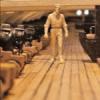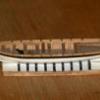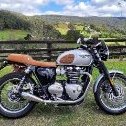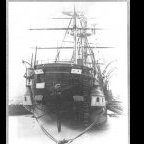Supplies of the Ship Modeler's Handbook are running out. Get your copy NOW before they are gone! Click on photo to order.
×
-
Posts
8,149 -
Joined
-
Last visited
Reputation Activity
-
 allanyed got a reaction from mtaylor in 1:98 Wooden Stanchions for HMS Victory
allanyed got a reaction from mtaylor in 1:98 Wooden Stanchions for HMS Victory
Hi Gregory,
Turned pillars may very well have been a common sight in 1757 regardless of the Admiralty Establishments. But, this is a topic circa1805 so turned pillars may not be apropos. No matter, there always seem to be exceptions regardless of whatever the norm might have been at any given time and regardless of what the Admiralty called for.
Ain't that the truth! 😀
Allan
-

-
 allanyed got a reaction from mtaylor in Query for Knowledge: Elm (Tree) Pumps?
allanyed got a reaction from mtaylor in Query for Knowledge: Elm (Tree) Pumps?
Craig, what is the ZAZ number on the bottom left, I cannot make it out?
THANK YOU
Allan
-
 allanyed reacted to tmj in 1:98 Wooden Stanchions for HMS Victory
allanyed reacted to tmj in 1:98 Wooden Stanchions for HMS Victory
I think my mind is made up. I'm going to use square stanchions in the hold and also between the Orlop and lower gun deck. All other pillars/stanchions/whatever's that will be supporting the upper level gun decks will be squared on the ends and turned in the middle, just like post #6 depicts. Bear in mind... post #6 is nothing but a concept of how I intend to fabricate those stanchions. It is 'NOT' anywhere close to the exact geometry that I will truly be using!
I truly appreciate everyone who has chimed in on this subject.
Many thanks!
Tom...
-
 allanyed got a reaction from Canute in Building the Wooden Walls: Design and Construction of the 74 Gun Ship Valiant opinions wanted.
allanyed got a reaction from Canute in Building the Wooden Walls: Design and Construction of the 74 Gun Ship Valiant opinions wanted.
Kolvir
Don't neglect the contemporary drawings at RMG Collections - https://www.rmg.co.uk/collections/objects/search/Valiant plans - and the scantlings which can be found in the book Scantlings of Royal Navy Ships which includes the 1719, 1745, and 1750 Establishments. They should make for a complete set of information for you.
The plans on the RMG site are low res but you can buy high res from them although they are not cheap. There are five high res plans of the 74s Ramillies' (1763); 'Terrible' (1762); 'Russell' (1764); 'Invincible' (1765); 'Magnificent' (1766); 'Prince of Wales' (1765); 'Marlborough' (1767); and 'Robust' (1764) on the Wiki Commons site that you may find to be better as they are super clear and will be apropos for a mid 18th century 74. They can be found on page two of https://commons.wikimedia.org/w/index.php?title=Category:Ship_plans_of_the_Royal_Museums_Greenwich&filefrom='Hayling'+(1760)+RMG+J0259.png#mw-category-media Hope this is a little help.
Allan
-
 allanyed got a reaction from mtaylor in Building the Wooden Walls: Design and Construction of the 74 Gun Ship Valiant opinions wanted.
allanyed got a reaction from mtaylor in Building the Wooden Walls: Design and Construction of the 74 Gun Ship Valiant opinions wanted.
Hi Mr. Kolvir
Did you watch the You Tube video by Olga Batcharov that shows a LOT of pages of this book? If I was building a 74 built to the 1750 Establishment I would invest the $30 needed to get it. This should go well with the five contemporary plans of Valiant at the RMG Collections site and the scantlings from the 1750 Establishment which are readily available as well.
This could be a really good project!
Allan
-
 allanyed got a reaction from Dave_E in HMS Pegasus 1776 by Knocklouder - Amati/Victory Models - 1:64
allanyed got a reaction from Dave_E in HMS Pegasus 1776 by Knocklouder - Amati/Victory Models - 1:64
Hi Bob,
It is super that you went ahead with building your own ship's boat. (There were no life boats back then 😀) For the future and for those that may be building this kit there is a good set of scantlings for ships' boats available that can be found in Boats of Men of War and Scantlings of the Royal Navy. Attached is the Excel version. Note the breadth of the thwarts for example. They would have been about 9.5" (0.15" at 1:64) broad. Looking at contemporary plans there is about a 21" (0.328" at 1:64) space between them. (There were variations over the years and regarding the type of boat, but 8 to 10 inches would be about right.) For a 14 gun sloop there were likely a 16 foot long boat or launch and a 24 or 25 foot pinnace. In 1777 an 18 foot cutter may have been added. These were probably all single banked, not double banked as the kit shows. There are a number of high resolution plans for various types of ship's boats on the WikiCommons site as well as a lot in low res on the RMG Collections site that may be of help as well.
Allan
Boat Scantlings 1-28-14.xlsx
-
 allanyed got a reaction from dafi in 1:98 Wooden Stanchions for HMS Victory
allanyed got a reaction from dafi in 1:98 Wooden Stanchions for HMS Victory
Hi Gregory,
Remember that post #9 refers to pillars in the hold, not on other decks. I am not convinced the pillars in the hold were ever turned. As to the other decks, based on the contracts and plans turned pillars seem to be the norm.
In looking at several contemporary contracts the wording has me convinced the pillars in the hold were probably always square and those on higher decks turned. When they are to be turned it is so specified in the following contract samples.
Astrea (36) and Curacoa (36) 1808
The Pillars in Hold under the Lower Deck and Orlop beams to be square 7½ inches at the Lower End, and 7 inches at the Upper End.
The Pillars under the Upper Deck Beams to be 6½ inches square at the Lower End, and 6 inches at the Upper End, and turned.
Elephant (74) launched 1786
The Pillars in Hold under the Gun Deck and Orlop Beams to be 9¾ inches square at the lower end, and 8¾ inches at the upper end.
The Pillars under the Upper Deck Beams to be 8½ inches square at the lower end, and 7½ inches at the Upper End, and turned.
To have Pillars to the Quarter Deck Beams, handsomely turned 6 inches square at the lower end & 5 ¼ inches at the upper,
Severn (50) and Burlington (50) 1695
To place under Each Beame in Hold and Upon the Kelson one Pillar. To be Seven Inches Square.
Upper Gun deck To place Two Tire of Turned Pillars in such Places as are Convenient Under ye Beames fore and aft, Six Inches square.
Lark (40) 1702
To place under Each Beame in Hold and Upon the Keelson one Pillar. To be Six Inches Square.
Upper Deck to place Two Tire of Turned Pillars fore and aft in such Places as are Convenient Under ye Beames, to be Five Inches square.
-
 allanyed got a reaction from mtaylor in HMS Indefatigable 1794 by Kevin - FINISHED - Vanguard Models - 1:64 - Feb 2023 to June 2025
allanyed got a reaction from mtaylor in HMS Indefatigable 1794 by Kevin - FINISHED - Vanguard Models - 1:64 - Feb 2023 to June 2025
Your build is fun to watch, your work is lovely! Gonna be fun not breaking the sprit or knocking over the model while maneuvering with the rigging.
Hope you do not get bitten 😀
-
 allanyed reacted to Morgan in 1:98 Wooden Stanchions for HMS Victory
allanyed reacted to Morgan in 1:98 Wooden Stanchions for HMS Victory
Looking at my photo archive of the UK’s 3 surviving historic ships, Victory, Trincomalee and Unicorn columns or stanchions in the Hold and Orlop are straight sided. The mess or berth deck on the 2 frigates could be either turned or straight (i.e. not turned). However, columns on the gun decks are always finished and turned in the centre section. I don’t believe there was a standard or pattern for this, other than being ‘custom and practice’, and down to the individual dock yard / constructor.
The Trincomalee has the Wadia (Bombay constructor) barley twist columns, she also has the more classic turned columns which are probably a later addition. I’ve attached a photo below, I’ve got a scratch Trincomalee in hand and have no idea as to how I will reproduce those!
The other 2 photos are from the Unicorn for comparison, one of the mess deck, the columns are crude in comparison to others, the second is of columns in the hold.
So in summary, for Victory I would venture straight for the hold and orlop, and turned on the gun decks.
Gary
-
 allanyed got a reaction from Old Collingwood in HMS Indefatigable 1794 by Kevin - FINISHED - Vanguard Models - 1:64 - Feb 2023 to June 2025
allanyed got a reaction from Old Collingwood in HMS Indefatigable 1794 by Kevin - FINISHED - Vanguard Models - 1:64 - Feb 2023 to June 2025
Your build is fun to watch, your work is lovely! Gonna be fun not breaking the sprit or knocking over the model while maneuvering with the rigging.
Hope you do not get bitten 😀
-
 allanyed got a reaction from mtaylor in HMS Pegasus 1776 by Knocklouder - Amati/Victory Models - 1:64
allanyed got a reaction from mtaylor in HMS Pegasus 1776 by Knocklouder - Amati/Victory Models - 1:64
Hi Bob,
It is super that you went ahead with building your own ship's boat. (There were no life boats back then 😀) For the future and for those that may be building this kit there is a good set of scantlings for ships' boats available that can be found in Boats of Men of War and Scantlings of the Royal Navy. Attached is the Excel version. Note the breadth of the thwarts for example. They would have been about 9.5" (0.15" at 1:64) broad. Looking at contemporary plans there is about a 21" (0.328" at 1:64) space between them. (There were variations over the years and regarding the type of boat, but 8 to 10 inches would be about right.) For a 14 gun sloop there were likely a 16 foot long boat or launch and a 24 or 25 foot pinnace. In 1777 an 18 foot cutter may have been added. These were probably all single banked, not double banked as the kit shows. There are a number of high resolution plans for various types of ship's boats on the WikiCommons site as well as a lot in low res on the RMG Collections site that may be of help as well.
Allan
Boat Scantlings 1-28-14.xlsx
-
 allanyed reacted to DaveBaxt in HMS Diana 1794 by DaveBaxt - Caldercraft - 1:64
allanyed reacted to DaveBaxt in HMS Diana 1794 by DaveBaxt - Caldercraft - 1:64
A big thanks to DavidEn, Dunnock , Beef Wellington and Ray for all the help with their fantastic Diana Build logs and their approach to the stern and quarter galleries. I have still not managed to get it exactly right and ended up with every thing being a little too high I think .After several attempts using the parts supplied I ended up making a lot of the parts myself but thinking back I probably could have used the parts supplied but think the cast rails and some of the brass parts could have been better defined. I also used the blue paint recommended by Dunnock rather than the dark blue supplied by caldercraft. I also added an extra layer of 1mm wood to the transom and I made the tefferail using 3 mm boxwood to get the concave effect on the lower curve. I also used the brass windows and painted them white after pickling and priming all the brass parts..
Making tafferail out of 3 mm boxwood and shaping to take brass parts and to give a concave effect
Gluing tafferail into position
Placing decorative rails in position to line up with the position of window quarter galleries . This was rather difficult so ended up making new window frames to hopefully look right . Below Temporary lining up of quarter galleries with stern fascia.
In
After several different checks and double checking that everything was lining up correctly .In the above photo you can see that the frame for the quarter galleries is sitting too high, so removed and replaced so that the lower edge of the quarter gallery frame lined up with the upper edge of the counter. This ensured that the windows of the stern gallery lined up with quarter gallery windows. There is however some compromise with the lining up of the bottom of the lower gun ports with the bottom of the quarter gallery windows and think this maybe due to positioning of the gun ports to fit the bloomfield cannon so that the gun barrels would lie central in within the gun ports.
First I glued the 0.8mm plywood back plate into position followed by the 3mm plywood top and bottom and finally the 0.8mm window fascia, also made from plywood. All these parts were eventually made rather than the supplied parts to get what I felt was a better shape.and position.
Starting to take shape. There is some more decorative rail to fit to the underneath of the quarter galleries and the upper and lower stern counter but hoping it will look presentable. Also one or two decoratie parts to fit and some touching up of paintwork, then fitting of the Tafferail to the stern.
Gluing the stern fascia onto the the transom has been solved by a number of ingenious ideas from previous Diana builders and due to the inceased thickness of the tafferrail (3mm) I was expecting some difficulty with bending the stern facia into position and I thought the use of heavy gauge rubber bands would be sufficient to bend the stern fascia into position. I ended up with a bit of overkill using a combination of clamps and rubber bands. I also thought of using appoxy resin but only had 5 minute
setting time at hand so ended up using ordinary PVA glue so hopefully this will be strong enough.The upper deck supports definately came in hand as did the very large rubber bands.
Unfortunately I have made several mistakes and have become quite frustated with this section of the build, fortunately I think the mistakes are hopefully cosmetic and nothing too major. Although my Diana is nowhere near the standard of the previous Diana builds as my skill levels are somwhat under the very high standards of the many experts on this forums. Hopefully the result is still quite presentable because, as of this moment ,after what I feel has been a long time.I do not feel inclined to change anything on this section of the build for the time being. Perhaps I could return to this at a later date and replace the decorative strips using something more appropriate than the ready made walnut strip I had in stock. I do have some boxwood which would be better suited and using shapers for the required profiles. This is what I intend to do with the rails running along the hull . I have decided against adding the ships name to the upper stern counter as I understand this was not the pracice for this period but could be wrong.
-
 allanyed reacted to scrubbyj427 in HMS Portland 1770 by scrubbyj427 - 1:48 - 4th rate 50-gun ship
allanyed reacted to scrubbyj427 in HMS Portland 1770 by scrubbyj427 - 1:48 - 4th rate 50-gun ship
Today I made some progress on the transom and frames, including the jig. I’ve been staring at this on my computer
for months in anxiety wondering if this will even make sense let alone work. It did. Some minor adjustments need to be made but I’m very happy with the results.
the jig is fit to the hull dry and it’s pretty snug in order To keep things lined up properly. There are two pieces of the jig that align all the frames as well as the vertical components of the jig, none of these parts should be glued to the frames otherwise you’re in trouble. There are a series of transverse structure pieces that tie the frames Together and help with QG assembly.
you can also see the gun port framing, this is all laser cut and etched for the gun port sills, they should just slide into place.
The base for the upper balcony was also installed to test fitment and it worked, it’s made up of two pieces one lower and one upper, together they also create the deck camber at the balcony and are a landing for the balcony planking. The notches in the frames help hold their shape and then just clamp the upper on after the lower is dry.
I also ran a test on the longitudinal piece for the gun ports on the lower deck, this also ties all the bulkheads together. On the bottom you will see the etchings for the gunport sills, tomorrow I will cut out the remaining 8 and possibly add
all the sills.
after all the gunport structure is in place and the bulkheads are stabilized, then I can remove the framing jig, the transverse parts of the jig will have to be cut loose in order to lift it out but this shouldn’t be a problem. Another jig will Be made in the center to contain the bulkheads when fairing, I will hopefully build this tomorrow.
Thanks for looking in! Questions and comments are always welcome.
JJ
-
 allanyed got a reaction from jpalmer1970 in HMS Pegasus 1776 by Knocklouder - Amati/Victory Models - 1:64
allanyed got a reaction from jpalmer1970 in HMS Pegasus 1776 by Knocklouder - Amati/Victory Models - 1:64
Hi Bob,
It is super that you went ahead with building your own ship's boat. (There were no life boats back then 😀) For the future and for those that may be building this kit there is a good set of scantlings for ships' boats available that can be found in Boats of Men of War and Scantlings of the Royal Navy. Attached is the Excel version. Note the breadth of the thwarts for example. They would have been about 9.5" (0.15" at 1:64) broad. Looking at contemporary plans there is about a 21" (0.328" at 1:64) space between them. (There were variations over the years and regarding the type of boat, but 8 to 10 inches would be about right.) For a 14 gun sloop there were likely a 16 foot long boat or launch and a 24 or 25 foot pinnace. In 1777 an 18 foot cutter may have been added. These were probably all single banked, not double banked as the kit shows. There are a number of high resolution plans for various types of ship's boats on the WikiCommons site as well as a lot in low res on the RMG Collections site that may be of help as well.
Allan
Boat Scantlings 1-28-14.xlsx
-
 allanyed got a reaction from tmj in 1:98 Wooden Stanchions for HMS Victory
allanyed got a reaction from tmj in 1:98 Wooden Stanchions for HMS Victory
Hi Gregory,
Remember that post #9 refers to pillars in the hold, not on other decks. I am not convinced the pillars in the hold were ever turned. As to the other decks, based on the contracts and plans turned pillars seem to be the norm.
In looking at several contemporary contracts the wording has me convinced the pillars in the hold were probably always square and those on higher decks turned. When they are to be turned it is so specified in the following contract samples.
Astrea (36) and Curacoa (36) 1808
The Pillars in Hold under the Lower Deck and Orlop beams to be square 7½ inches at the Lower End, and 7 inches at the Upper End.
The Pillars under the Upper Deck Beams to be 6½ inches square at the Lower End, and 6 inches at the Upper End, and turned.
Elephant (74) launched 1786
The Pillars in Hold under the Gun Deck and Orlop Beams to be 9¾ inches square at the lower end, and 8¾ inches at the upper end.
The Pillars under the Upper Deck Beams to be 8½ inches square at the lower end, and 7½ inches at the Upper End, and turned.
To have Pillars to the Quarter Deck Beams, handsomely turned 6 inches square at the lower end & 5 ¼ inches at the upper,
Severn (50) and Burlington (50) 1695
To place under Each Beame in Hold and Upon the Kelson one Pillar. To be Seven Inches Square.
Upper Gun deck To place Two Tire of Turned Pillars in such Places as are Convenient Under ye Beames fore and aft, Six Inches square.
Lark (40) 1702
To place under Each Beame in Hold and Upon the Keelson one Pillar. To be Six Inches Square.
Upper Deck to place Two Tire of Turned Pillars fore and aft in such Places as are Convenient Under ye Beames, to be Five Inches square.
-

-
 allanyed got a reaction from Keith Black in 1:98 Wooden Stanchions for HMS Victory
allanyed got a reaction from Keith Black in 1:98 Wooden Stanchions for HMS Victory
Hi Gregory,
Remember that post #9 refers to pillars in the hold, not on other decks. I am not convinced the pillars in the hold were ever turned. As to the other decks, based on the contracts and plans turned pillars seem to be the norm.
In looking at several contemporary contracts the wording has me convinced the pillars in the hold were probably always square and those on higher decks turned. When they are to be turned it is so specified in the following contract samples.
Astrea (36) and Curacoa (36) 1808
The Pillars in Hold under the Lower Deck and Orlop beams to be square 7½ inches at the Lower End, and 7 inches at the Upper End.
The Pillars under the Upper Deck Beams to be 6½ inches square at the Lower End, and 6 inches at the Upper End, and turned.
Elephant (74) launched 1786
The Pillars in Hold under the Gun Deck and Orlop Beams to be 9¾ inches square at the lower end, and 8¾ inches at the upper end.
The Pillars under the Upper Deck Beams to be 8½ inches square at the lower end, and 7½ inches at the Upper End, and turned.
To have Pillars to the Quarter Deck Beams, handsomely turned 6 inches square at the lower end & 5 ¼ inches at the upper,
Severn (50) and Burlington (50) 1695
To place under Each Beame in Hold and Upon the Kelson one Pillar. To be Seven Inches Square.
Upper Gun deck To place Two Tire of Turned Pillars in such Places as are Convenient Under ye Beames fore and aft, Six Inches square.
Lark (40) 1702
To place under Each Beame in Hold and Upon the Keelson one Pillar. To be Six Inches Square.
Upper Deck to place Two Tire of Turned Pillars fore and aft in such Places as are Convenient Under ye Beames, to be Five Inches square.
-
 allanyed reacted to iMustBeCrazy in Query for Knowledge: Elm (Tree) Pumps?
allanyed reacted to iMustBeCrazy in Query for Knowledge: Elm (Tree) Pumps?
6844 https://www.rmg.co.uk/collections/objects/rmgc-object-86635
-
 allanyed got a reaction from Keith Black in 1:98 Wooden Stanchions for HMS Victory
allanyed got a reaction from Keith Black in 1:98 Wooden Stanchions for HMS Victory
Hi Gregory,
Turned pillars may very well have been a common sight in 1757 regardless of the Admiralty Establishments. But, this is a topic circa1805 so turned pillars may not be apropos. No matter, there always seem to be exceptions regardless of whatever the norm might have been at any given time and regardless of what the Admiralty called for.
Ain't that the truth! 😀
Allan
-
 allanyed got a reaction from Keith Black in 1:98 Wooden Stanchions for HMS Victory
allanyed got a reaction from Keith Black in 1:98 Wooden Stanchions for HMS Victory
Gregory, You may right that McKay is right and Steel got it wrong. I was just going by Folio XVI of Elements and Practice of Naval Architecture as Steel was a couple years after the period in question and he was basing information on actual practice at that time. I am sure there were other designs, I was only pointing out what Steel wrote as it was as close to the 1803 date in question as I could find. For example in the The Shipbuilder's Repository of 1788 on page 290 it gives dimensions of the square ends only, it does not make mention of a shape for the area between the ends. Maybe in that book it assumed it could be square with some chamfering or octagonal or round. If you go back to the Establishments of 1719, 1745, and 1750 , they are specific that the pillars are all square from top to bottom.
Maybe the sketch below will help regarding Steel's specific comments that the middle section is to be square. The lengths are of course going to vary by deck and location but the cross section dimensions are those given by Steel for a first rate. I added the chamfer as well.
Allan
-
 allanyed got a reaction from Keith Black in 1:98 Wooden Stanchions for HMS Victory
allanyed got a reaction from Keith Black in 1:98 Wooden Stanchions for HMS Victory
Hi Gregory,
I only have what Steel wrote in the scantlings pages. It is written that the pillars were square, but I imagine the four corners in the middle 3/4's square section were chamfered. I would be very interested to see other contemporary information with additional descriptions. I would not be surprised if there were other shapes and dimensions coming out of the various yards. Seems there is very little fixed in stone in those days.
Allan
-
 allanyed got a reaction from Keith Black in 1:98 Wooden Stanchions for HMS Victory
allanyed got a reaction from Keith Black in 1:98 Wooden Stanchions for HMS Victory
Thanks. I realize contemporary information may not even exist for this kind of information but trust that the work in your book was well studied and could be right on the money,
Allan
-
 allanyed reacted to iMustBeCrazy in Query for Knowledge: Elm (Tree) Pumps?
allanyed reacted to iMustBeCrazy in Query for Knowledge: Elm (Tree) Pumps?
Two examples,
On the left 1 tap at the hull to let water drain into the well to then be pumped out.
On the right 2 taps one at the hull and one at the base of the pump, this allows you to do the same as above or to pump from outboard without filling the well.
-
 allanyed reacted to Gregory in 1:98 Wooden Stanchions for HMS Victory
allanyed reacted to Gregory in 1:98 Wooden Stanchions for HMS Victory
Just to keep the discussion going.
Here is a draught of " 'Dorsetshire' (1757) Scale: 1:48. Plan showing the capstans, lanterns, turned columns,
A snip from that drawing. Did someone not follow the 1750 establishments? 😁
Medea 1778
One More:
Prudent 1768 . The shading would seem to indicate the centers are turned.
P.S.
I realize, without further evidence, we cannot assume the ship was built as drawn.










